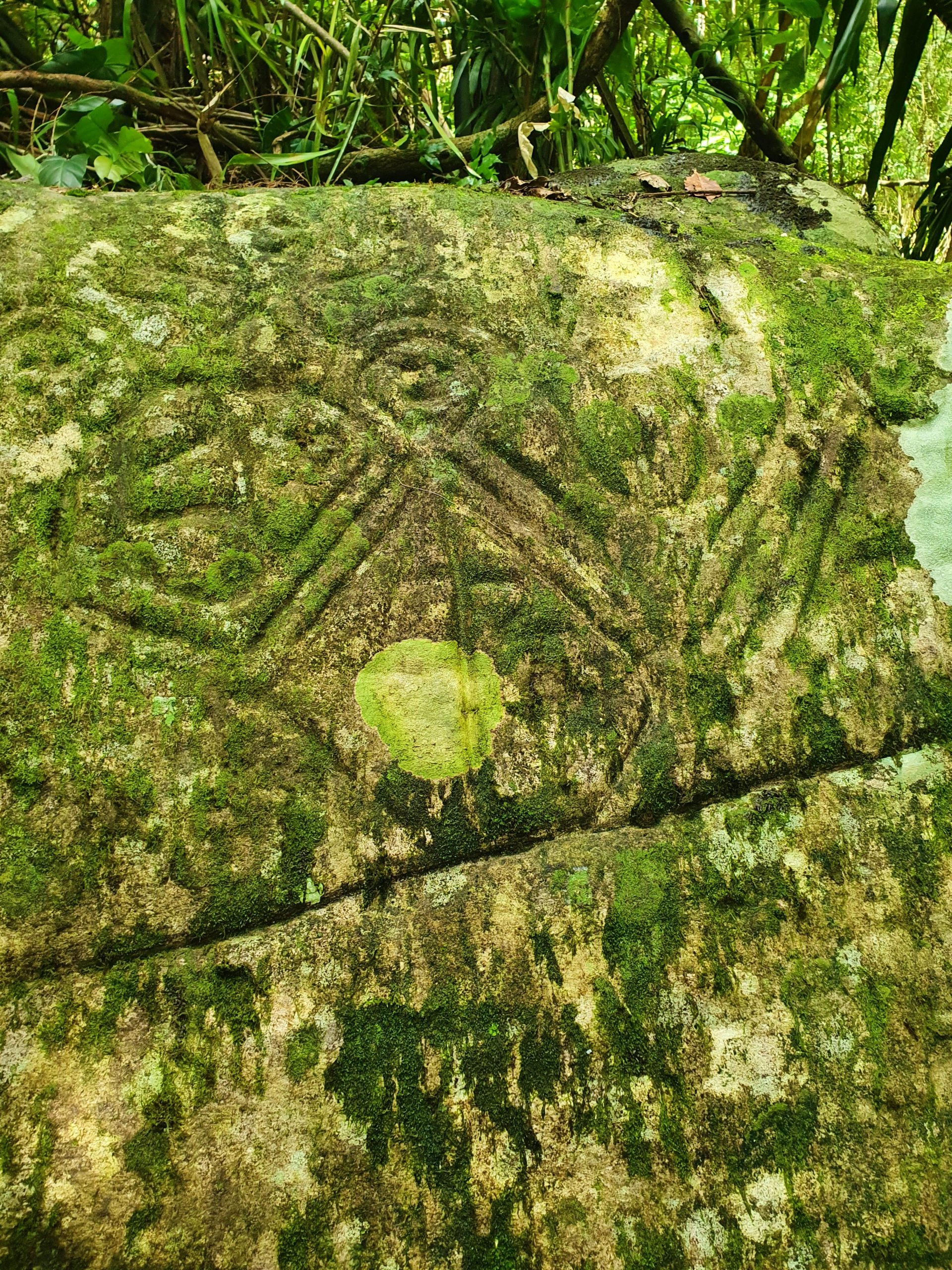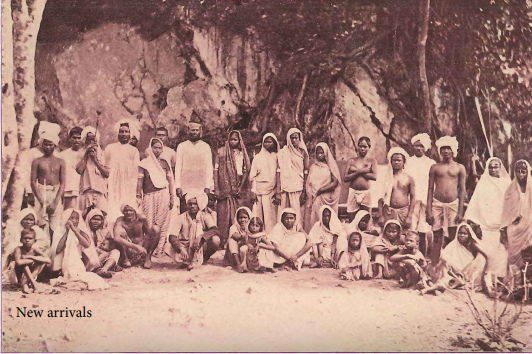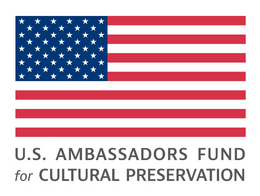What’s At Risk?
History of Trinidad and Tobago
Brief History of Trinidad and Tobago by Karishma Nanhu
Trinidad and Tobago shares similar historical themes with much of the wider the Caribbean: Amerindian settlement, European colonial conquest and the forced migration of multiple peoples to work on plantations. The historical experiences have produced the multiethnic, multicultural society that we have today. The two islands, Trinidad and Tobago, were only joined in 1898, under British colonial rule. While each island has had its own history there are overarching common experiences.
The First Peoples
The Amerindians who settled in Trinidad and Tobago, also referred to as the First Peoples, migrated from South America via the Orinoco Delta. Archaeological evidence of their presence found at Banwari Trace Archaeological Site, Trinidad dates back to approximately 5000 B.C. (Boomert, 2016) which is the earliest evidence of pre-Columbian people in the Caribbean. There were several Arawak tribes in Trinidad, including the Taino. The Kalinago also lived in Trinidad and Tobago. Evidence of these cultures in the form of petroglyphs, complex ceramic motifs, natural elements such as shells and beads or even stone artefacts have been discovered in Trinidad and Tobago.


Pictures of Caurita Petroglyphs by Karishma Nanhu
Our Colonial Past
The arrival of Christopher Columbus in 1498 in Trinidad however meant trouble for the Amerindians. The Spanish colonists enslaved the Amerindians and put them to work. The colonial trajectory for each island differed from this point on, with Tobago seeing more colonial squabbles than Trinidad. Tobago was claimed by Spain but other European colonists also staked their claims. The British, French, Dutch and the Courlanders (modern day Latvia) fought for possession of Tobago. On the other hand, Trinidad was a failing Spanish colony and in 1793, through the Cedula of Population, invited French colonists to settle in Trinidad with their enslaved Africans to develop the colonial extractive industries: sugarcane, cocoa and coffee. The Cedula was attractive to French colonists and resulted in an increased population, especially enslaved Africans, who worked on the new plantations, giving Trinidad and economic boost. It also saw the introduction of French culture. Just a few years later, in 1797, Trinidad was claimed by the British which led to the increased importation of enslaved Africans, mainly for the cultivation of sugar. The cultivation of sugar, by enslaved Africans, had a profound impact on Caribbean society, and permanently shaped the trajectory Caribbean development.
Following the emancipation of the enslaved in 1838, several groups of people were brought to Trinidad to work on the plantations under unfree labour schemes: formerly enslaved in other parts of the Caribbean and North America; Africans liberated from the Trans-Atlantic trade in enslaved persons; indentured Chinese; Portuguese Madeirans and indentured Indians. The last scheme, Indian indentureship, was the most successful from the colonial perspective and therefore lasted the longest. By 1870 Trinidad’s sugar industry primarily relied on Indian indentured labourers, with Trinidad being the second largest importer of Indian labourers in the British West Indies. Indian indentureship ended on January 1st 1920.

Indentured Indians on Nelson Island, Trinidad
Source: National Archives of Trinidad and Tobago
The 20th Century and post-Independence
The 20th century was indeed a tumultuous one for Trinidad and Tobago, as there were many critical events, especially the achievement of independence. At the turn of the 19th century, a significant development which changed the history of Trinidad and Tobago was the discovery of oil. This led to the development of the southern part of Trinidad, and it attracted workers from the neighbouring Caribbean islands. The combination of several factors including poor working conditions, poverty, World War 1 and the birth of early trade unions led to riots in the 1930s, known as the labour riots. These conditions, especially after World War 2 led to the fermentation of political ideas, and the call for independence from Britain came soon after. People across Trinidad and Tobago heeded the call from Dr. Eric Williams, to actively demand change.
Independence was granted in 1962 with Dr. Williams becoming the first Prime Minister. Trinidad and Tobago became a republic in 1976. The 1970s however saw people from across the nation, including the two major industries sugar and oil, united against persistent colonial systems, in what is now known as the Black Power Revolution. Although the people were temporarily placated by the oil boom and the influx of oil dollars beginning in 1973, the happy times did not last. By the 1980s Trinbagonians were back on the streets again, protesting against IMF intervention and the repercussions that they felt personally though the imposition of salary cuts, removal of benefits, price increases and the imposition of new taxes. Against this backdrop, there was an attempted coup d’état on the government of Trinidad and Tobago by the Jamaat al Muslimeen on July 27th 1990. This traumatic event left an open wound on Trinbagonian society and created further divisions amongst an already divided population.
In the 2000s Trinidad and Tobago experienced another boom in the hydrocarbon industry. This period also saw the closing of the sugar industry, which also coincided with a decrease in overall agricultural production. Over the past decade, there has been a small revival in Trinidad’s cocoa industry with the production of cocoa that has been internationally recognized for high quality.
While the hydrocarbon industry remains dominant, Trinidad is known worldwide for its culture. Trinidad’s annual Carnival, a festival stemming from enslaved Africans and plantation society, involves historical traditions, calypso and soca music, costumes, and fetes. Carnival, more than anything else, brings people together, from all walks of life. It has even influenced the development of diaspora Carnivals in North America and Europe.

Picture of Masqueraders enjoying Carnival by Keegan Callendar

Picture Trinidad Carnival by Keegan Callendar
Trinidad and Tobago is the home of the steel pan, the only acoustic instrument invented in the 20th century, and steel bands make up a vibrant part of our Carnival. On the other hand, Tobago boasts some of the most beautiful beaches in the world, with tourism being a major industry. Both islands have diverse flora and fauna, some of which are only found here.
Far more can be said about Trinidad and Tobago, than this limited introduction gives. That being said, one of the most outstanding features to note is the people. The influx of people for the purpose of the colonial enterprise created the multicultural and multiethnic society Trinidad and Tobago has today. There is an array of vibrant and diverse traditions, cuisines, religions, festivals and even architecture. Indeed, there is much to learn and experience in Trinidad and Tobago.
Threats
Coming Soon
© Resilient Heritage | Trinidad + Tobago. All rights reserved. A Project of the National Trust of Trinidad & Tobago. Funded by

